Motorcycles within MotoGP reach dizzying speeds thanks to continuous technical innovations. The most important component behind it? IT, more specifically workstations and servers that power the factory and the technicians during a race weekend.
The TT in Assen, holy ground for MotoGP and motorcycle fans in general. What Spa-Francorchamps is in Belgium for F1, Assen is in the Netherlands for MotoGP: both circuits with a historical background. Assen, better known as the Cathedral of Speed, is even celebrating its 100th anniversary.
Where better to celebrate that anniversary than in the garage and hospitality of the iconic Ducati Corse. Just like with F1, there is also a mystique surrounding the color red in MotoGP. It works out well that the logo of Lenovo, which invited us for a race weekend, is the same red as the Desmosedici (Ducati’s motorcycle).
Fatherly Welcome
Team manager Davide Tardozzi warmly welcomes us on Thursday afternoon in a quiet paddock. The hustle and bustle only starts on Friday during the free practice sessions and reaches a climax on Sunday during the race. Tardozzi is also the perfect example of a good father figure. The way he manages the team, with warmth and passion, is something many entrepreneurs can learn from.

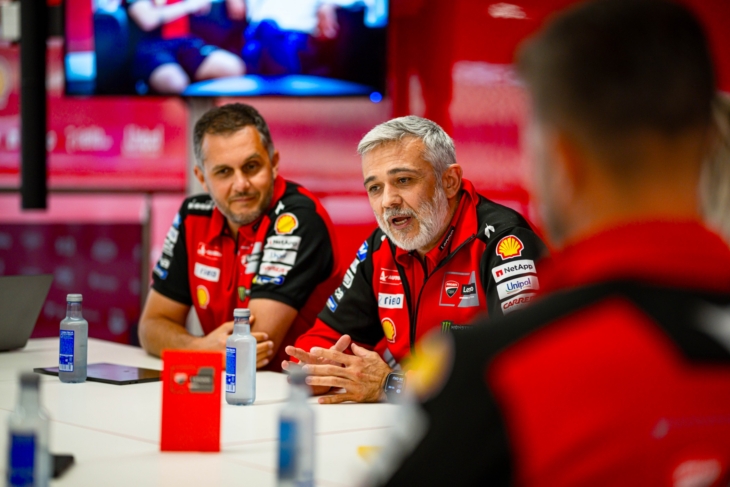
He sits us around the table with Mauro Grassilli, sporting director at Ducati Corse. His opening story is immediately clear. “Today, a good motorcycle and a talented rider are no longer enough. You have to collect as much data as possible and unleash the computing power on it. Only then can you make the right decisions in a very short time.”
Tech-partnership
The collaboration with Lenovo started in 2018 as technical support, but grew into a deep partnership. “It’s not just a sticker on the motorcycle,” Grassilli emphasizes. “We develop solutions together that make us faster every week.”
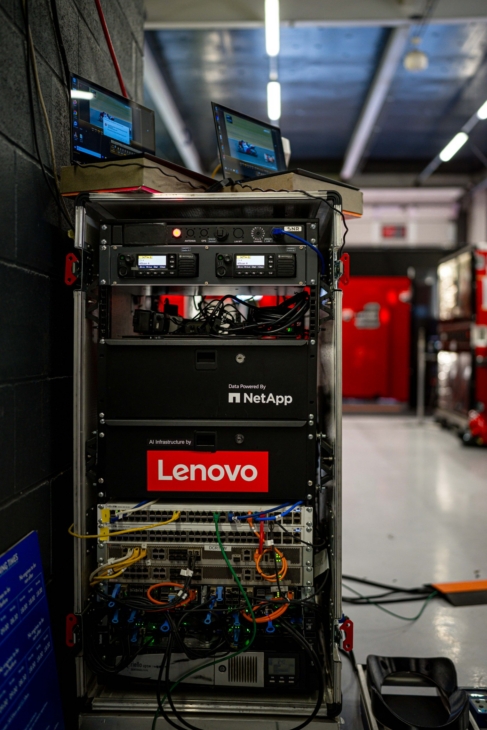

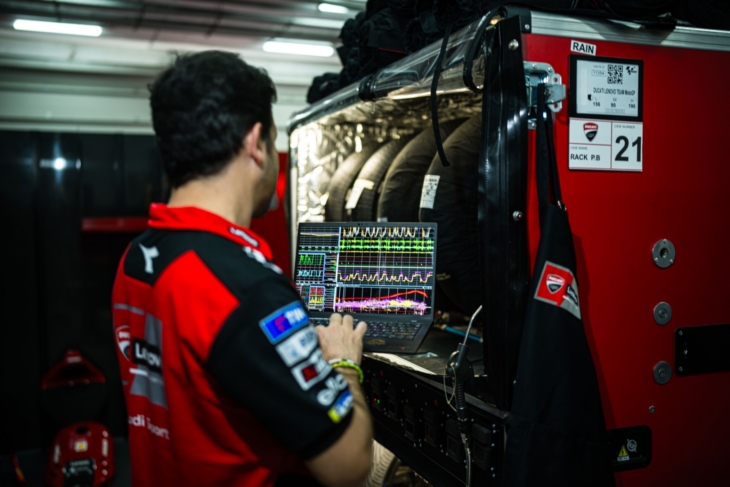
Lenovo provides servers, workstations and laptops that deliver the enormous computing power for simulations and data analysis. “If we can calculate a hundred aerodynamic solutions in one month, then we choose the best one,” Tardozzi explains. “The faster those simulations run, the faster we get new parts on the motorcycle.”
Virtual Sensors and AI
A MotoGP motorcycle has around 35 physical sensors, but Ducati goes further. “We use virtual sensors, calculated with AI, to measure parameters that we cannot physically capture,” Grassilli explains. “That ranges from grip levels to the movements of the rider himself.”
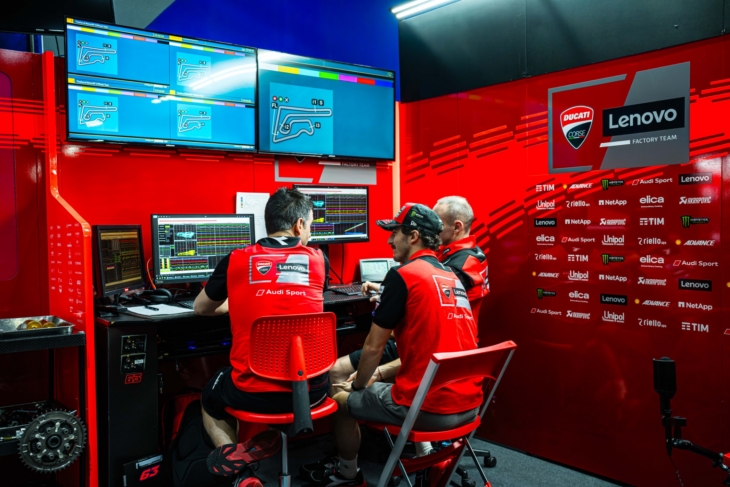
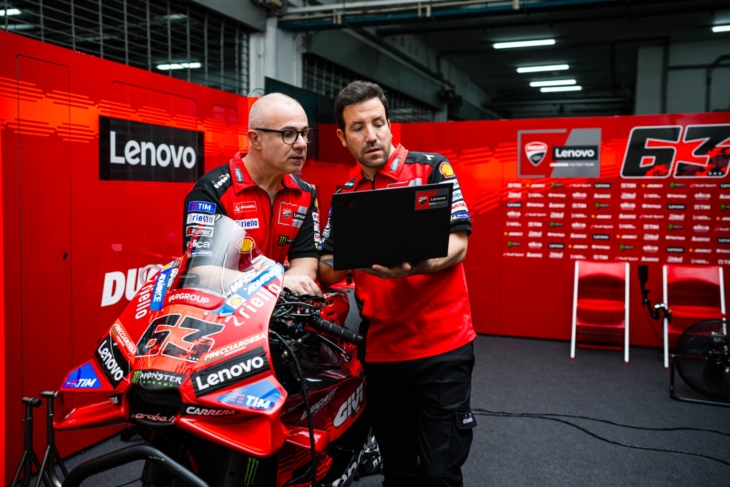
Machine learning also helps to translate the endless data streams into usable insights. Tardozzi: “A race weekend easily generates 100 gigabytes of data. AI helps us to reduce that mountain to concrete KPIs and decisions.”
The Remote Garage: Bologna is Watching
During a race weekend, a core team travels to the circuit, but the ‘remote garage’ in Bologna is also running. “We always have engineers at home who work in real-time,” says Tardozzi. “Thanks to redundant connections – Starlink, 4G and local lines – they are almost literally present in the garage.”
That approach started during the pandemic and grew into a strategic asset. “It’s as if we have fifty extra people on the circuit, without the cost and logistics,” says Tardozzi.
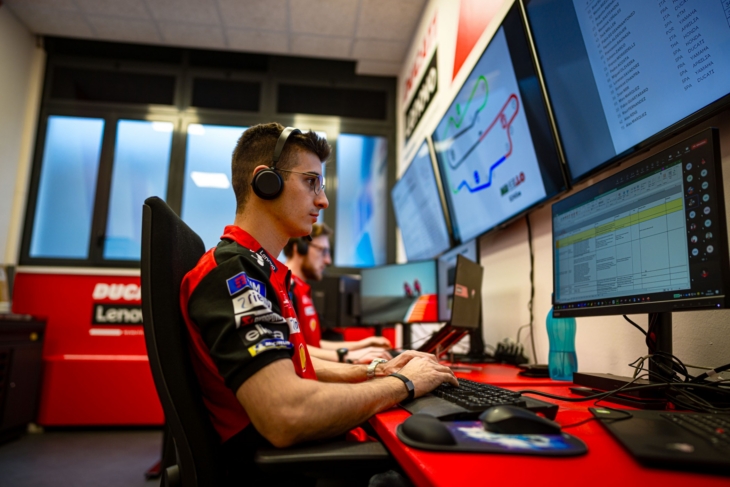

A big difference with Formula 1: live telemetry is prohibited in MotoGP. “We are not allowed to send data during the race,” Grassilli explains. “Only when the motorcycle is in the garage do we download everything and sometimes we only have minutes to make the analysis.”
That’s why fast servers and edge computing are so important. “In those few minutes we have to analyze data, link the feedback from the rider and prepare new settings. Without lightning-fast IT, that is not possible,” Tardozzi adds.
Video and Data: Analyzing Ghost Riders
In addition to telemetry, video analysis is playing an increasingly important role. “We film every corner and let AI combine the images with data,” says Grassilli. “For example, we can ‘ghost’ one rider onto the other and see exactly where time is lost or gained.”
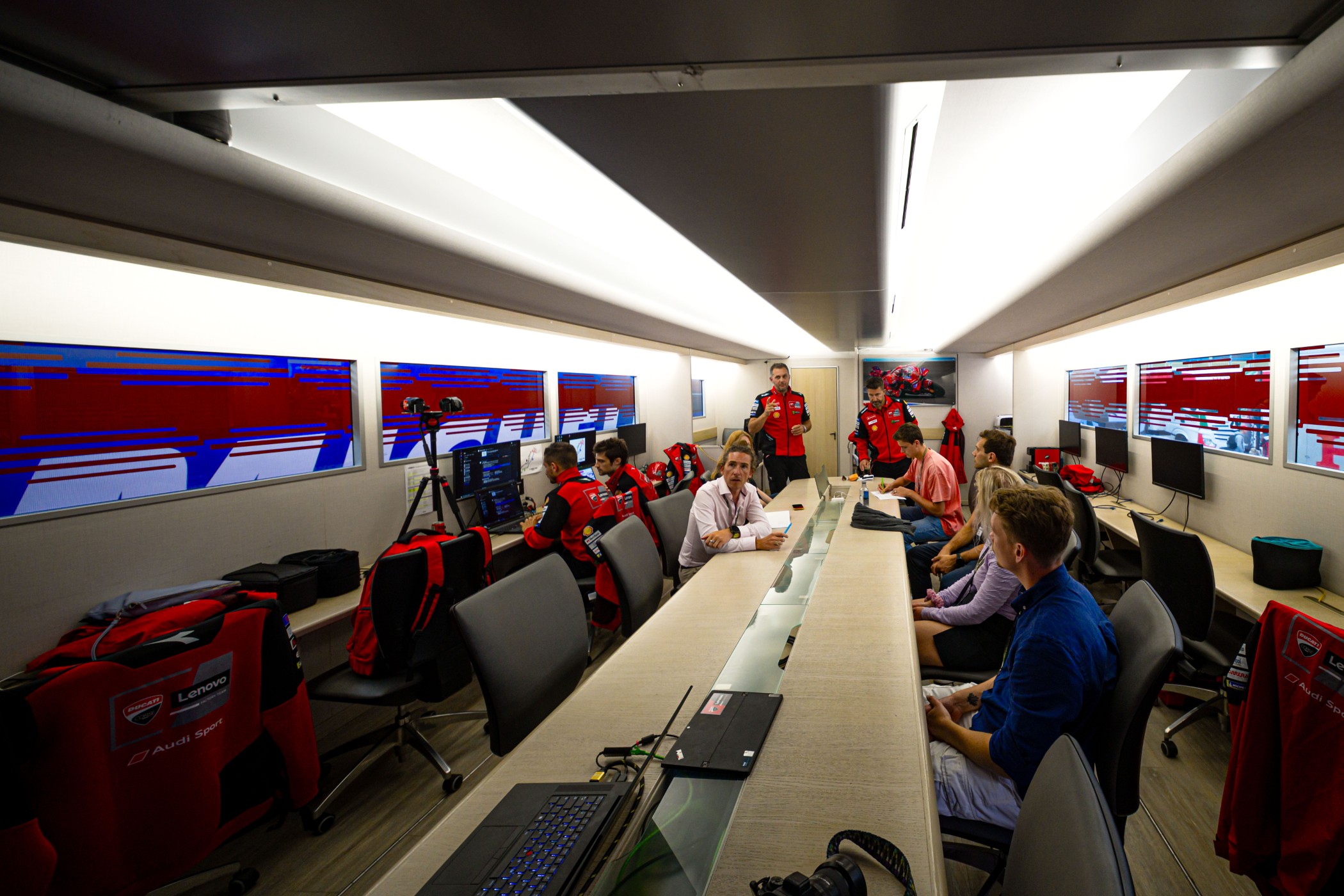
For the riders, that is a powerful tool. “If they only see graphs, they don’t always understand what we mean. But when they see their own line next to that of a colleague on video, it immediately becomes clear,” says Tardozzi.
Hardware in Extreme Environments
Lenovo’s servers and laptops are not spared. “Our edge servers are sometimes next to tire warmers that radiate 100 degrees of heat,” says Grassilli.
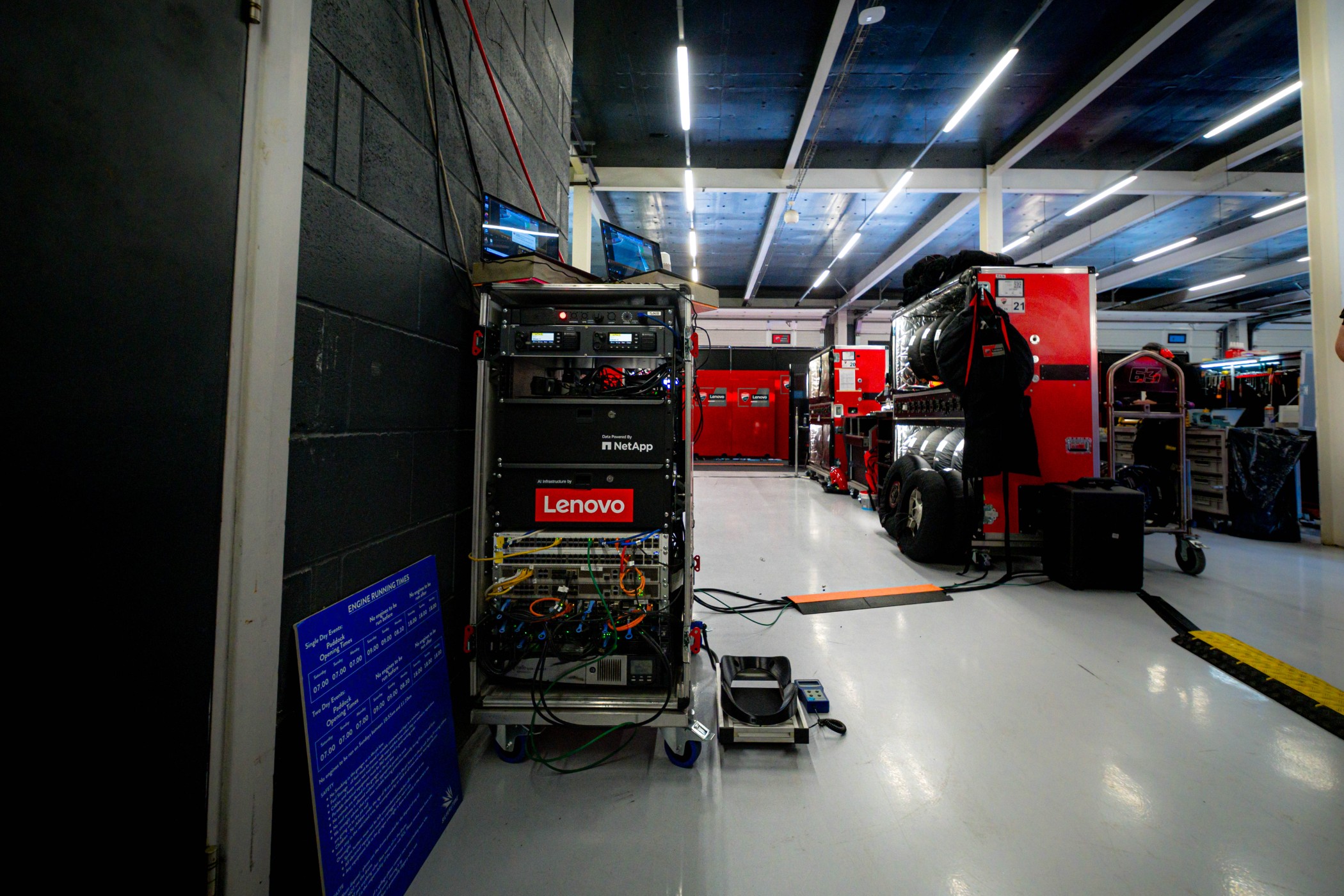
“We travel with them to tropical circuits, they have to withstand heat, humidity and shocks. If it works at Ducati, it works everywhere.”
Running Simulations
MotoGP teams are only allowed to schedule five test days per year. “That’s why simulations are crucial,” Conti emphasizes. “We do vehicle simulations, aerodynamics, suspension dynamics, everything. Without HPC and AI, we would be flying blind.”
Tardozzi adds: “A mistake in the first race haunts you the whole season. That’s why we put so much energy into modeling and virtual testing.”

A motorcycle is more complex to simulate than a car because the rider makes up a third of the mass and constantly changes position. “We use cameras and machine learning to analyze their movements,” Grassilli explains
The Next Corner
According to Tardozzi and Grassilli, the upcoming regulation changes in 2027 promise a revolution. Ride-height devices disappear, aerodynamics are limited and Pirelli becomes the exclusive tire supplier (today that is Michelin). “That completely mixes up the cards,” says Conti. “We will have to learn everything again: how the new tires work, how we have to adjust the motorcycle. Data analysis and simulations will then become even more important.”
Without the computing power, smart AI algorithms and the remote garage, the Desmosedici would not be the reference it is today.
Mauro Grassilli, sporting director at Ducati Corse
“Then data analysis becomes even more important,” says Grassilli. “Because you can only introduce a new aerodynamic package twice a year. Then you have to be right from the first attempt.”
Ducati Corse is clearly not only a racing team, but also a data team. Without the computing power, smart AI algorithms and the remote garage, the Desmosedici would not be the reference it is today. As Grassilli summarizes it: “Data has become as important as the mechanics of the motorcycle.”
